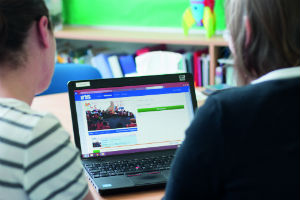Many of us will have had a range of lesson feedback experiences. With some feedback, ideas are energised and next steps organically emerge. But there’s also feedback that can leave us a little unclear, a little less sure, as well as feedback that that can cause us to disengage or become upset.
With feedback that causes these types of negative reactions, it must be considered whether there is impact on learners and what this impact may be.
How do we ensure that the feedback we give in our schools to colleagues, whether verbal or written, is energising, empowering and most importantly, impactful on learning?
The following 6 strands are designed to ensure that feedback empowers our colleagues and creates transformational outcomes for students.
6 ways to make sure your feedback empowers others
Core beliefs
What are the principles of feedback in your organisation? Does everyone know and believe them?
Feedback needs to be underpinned by a vision that is understood by everyone, especially those who are giving this feedback to practitioners. An example of an underpinning belief might be that everyone has unlimited potential or that reflection is always sought prior to feeding back.
Curiosity
We may observe one lesson or one part of a lesson, however the classroom is a complex place informed by previous lessons and a large group of young people or children.
It is essential that instead of judging, we are asking probing questions that help inform the observer’s knowledge and prompt reflection for the colleague receiving the feedback.
Description
By simply describing what you have seen or heard in a specific way, you hold up a mirror to learning and teaching.
This mirror is a very powerful tool to inspire reflection. Whether describing verbally or as a time stamped comment, this simple tool can be easily underestimated.
Data
Use of data instead of judgement on a pre agreed focus allows neutrality in lesson feedback. It also means that discussion is informed by fact, rather than potentially conflicting memories or opinions. A set of data and some time to explore it can produce very rich dialogue.
This data could come in the form of a simple count of question types or use of a timer to determine who is talking and how long it is for.
Context 
Similar to data, context means that examples can be given to support feedback, leaving less room for disagreement. Contextualisation also makes it easier for you both to identify causes and effects in the lesson.
Video can be an objective tool for providing context. Reviewing the video together means you can pause, rewind and fast-forward to relevant sections.
Seeing the lesson with their own eyes, also enables your colleague to come to their own conclusions, making your conversation deeper and more meaningful for you both.
Comfort
Ensure that when and where you give your feedback is appropriate. Too often, feeding back to our colleagues is not prioritised and can be hastily delivered as breaktime closes or after a long department meeting. At these times, the opportunity for a rich discussion is lost due to limited time or little energy at the end of a long day.
Agree an appropriate time for discussion to make feedback as effective as possible and use it as it should be used; as powerful professional dialogue that has the impact on learning that it should.
Have you ever received really empowering feedback? Why did it have such a big effect on you? We'd love to hear from you in the comments section.



Leave a comment:
Get blog notifications
Keep up to date with our latest professional learning blogs.